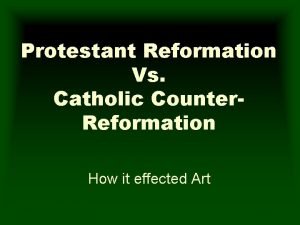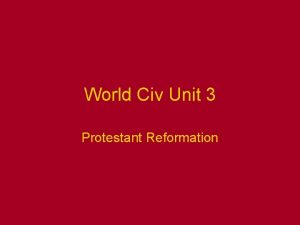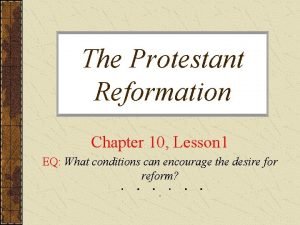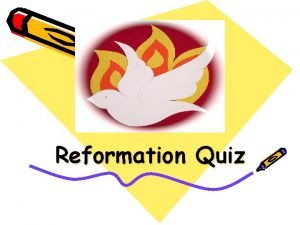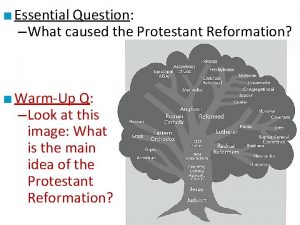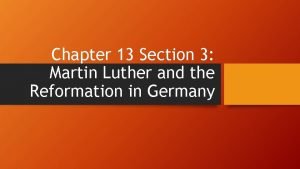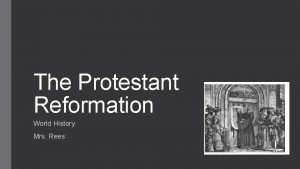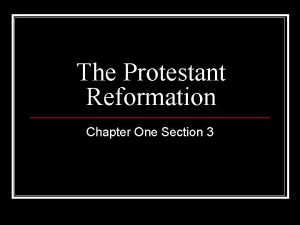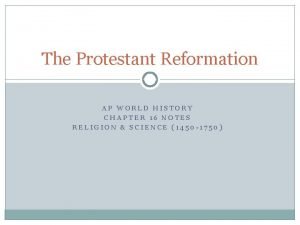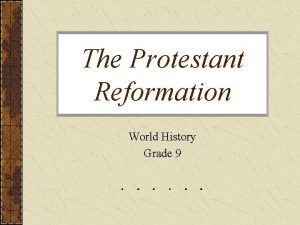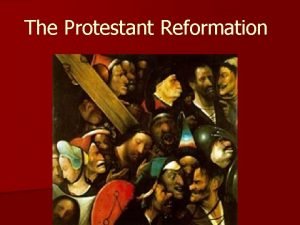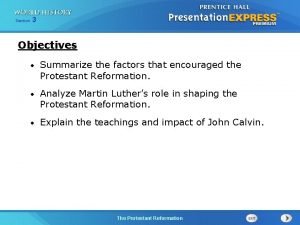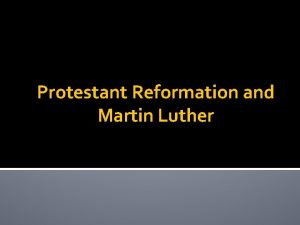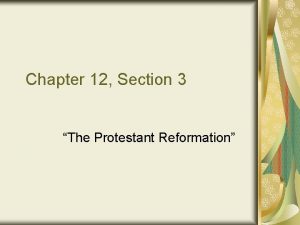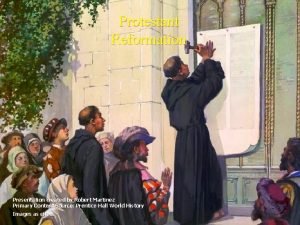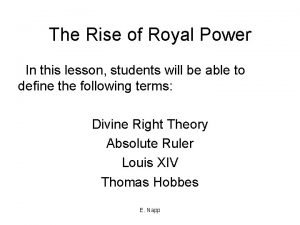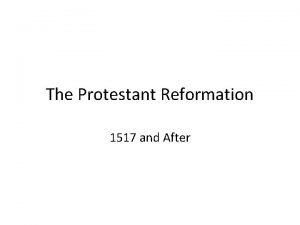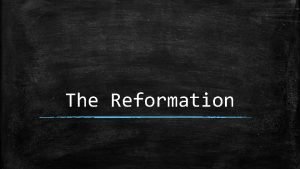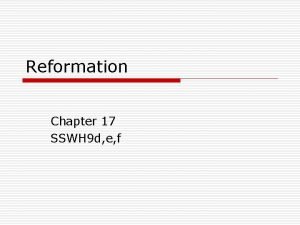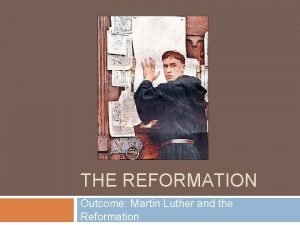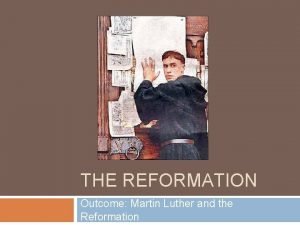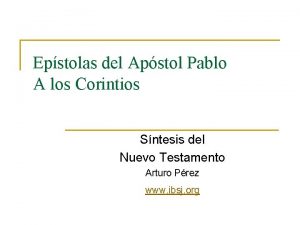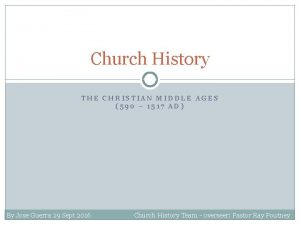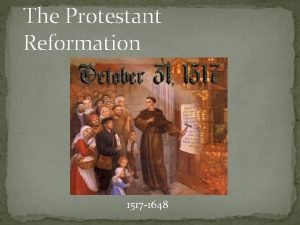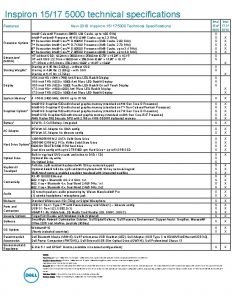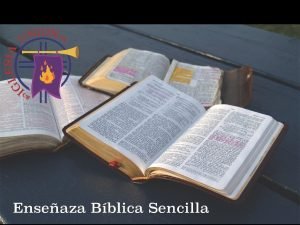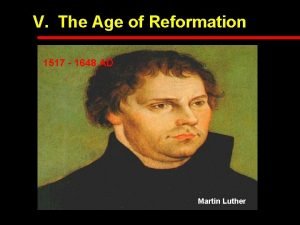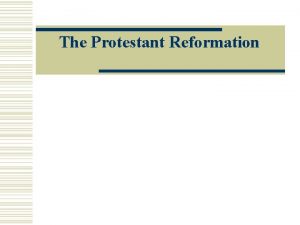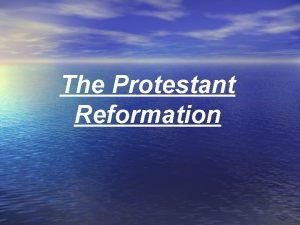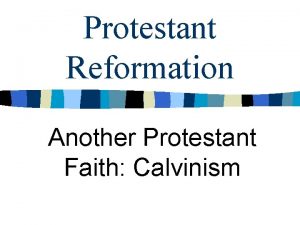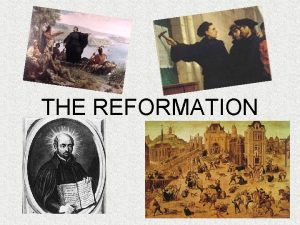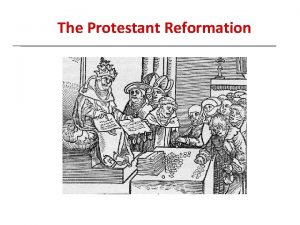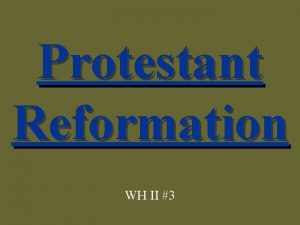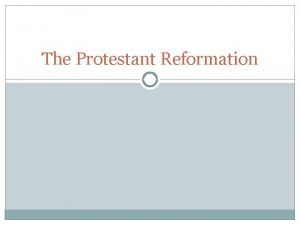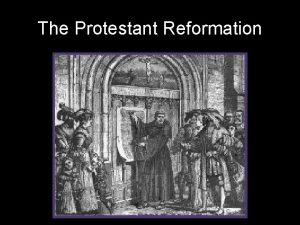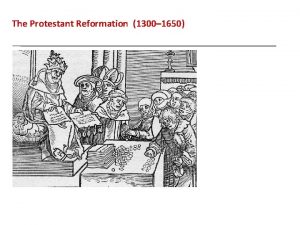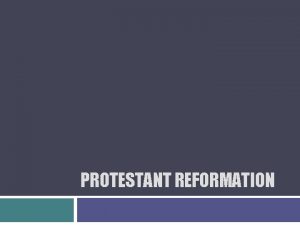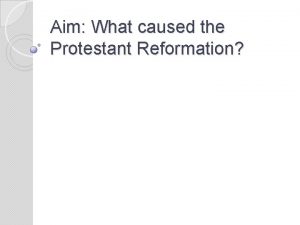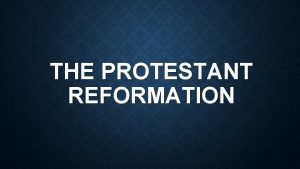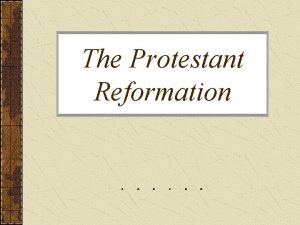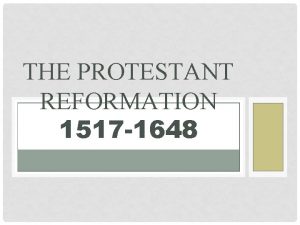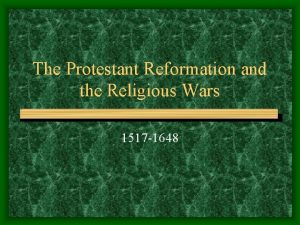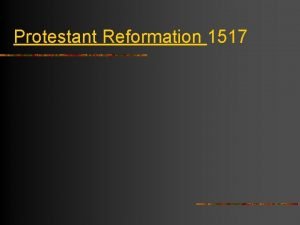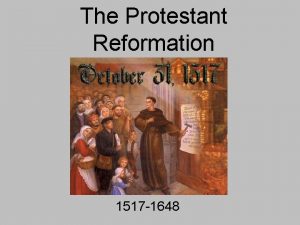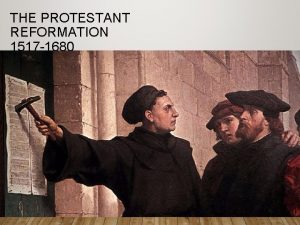The Protestant Reformation 1517 ca 1564 How and





























- Slides: 29

The Protestant Reformation 1517 – ca. 1564 How and why are these two churches different?

True or False? • Test your knowledge of the Protestant Reformation……

Protestant, Catholic, or Both? • 1. The Pope in Rome is the sole head of the Church and must be obeyed. • 2. Baptism (whether of adults or children) is an important symbolic rite. • 3. Faith alone is sufficient to earn salvation. • 4. Praying to saints and making pilgrimages can assist you in achieving salvation. • 5. Women priests/ministers are allowed.

Protestant, Catholic, or Both? • 6. Clergy cannot marry and must remain celibate. • 7. The Mass can only be recited in Latin. • 8. Jesus died on the Cross and was resurrected three days later, thus sacrificing himself for the sins of future generations. • 9. The Immaculate Conception of Mary allowed her to have a virgin birth. • 10. The Eucharist contains Christ’s body and blood.

The Protestant Reformation (1517 -1555) • • Why is it important, then and now? Why did it happen? Who were some of the leaders? How did people learn about these ideas?

Vocabulary • • • Indulgence Transubstantiation Simony Pluralism Nepotism Sola scriptura Sola fide Sola gratia Solus Christus Soli Deo gloria Diet

Christianity in the West • http: //philtar. ucsm. ac. uk/encyclopedia/christ /west/index. html http: //philtar. ucsm. ac. uk/encyclopedia/christ/





Significance of Protestant Reformation • • Loss of Catholic unity & “Christendom” Literacy Puritans “Protestant work ethic” (Max Weber) Rise of capitalism, individualism “liberation” from Catholicism Separation of Church & State (? )

Europe Divided

Reform in Germany, 1517– 1555 • The pattern of religious reform in Germany was complex. Although some territorial princes, such as the dukes of Bavaria, rejected reform, most free towns, particularly those in the southwest, adopted it. Copyright (c) Houghton Mifflin Company. All Rights Reserved.

The sale of indulgences • The problem: how can one atone for grievous sin? • The solution: Service on behalf of the Church: – Crusading – Pay for a crusader – Payment to the Church • Church has a “treasury of merits” stored up by Christ and the saints Indulgence printed by Wm. Caxton, 1476

Sale of Indulgences (and other vices…)

Martin Luther • b. 1483 • 1502 Ph. D in theology • Sensitive, insecure, emotional, fearful of a harsh Christian God • 1512 professor @ U. of Wittenberg; a “good monk” • But he’s not confident that he’s earned salvation by conventional means, and he hates indulgences. • He publishes 95 Theses with his ideas re justification by faith, finding answers in Scripture, & priesthood of all believers.

Timeline of the Early Reformation • 1517: Luther posts his 95 theses on the door of the Wittenburg church • 1518: Zwingli gains control of Zurich • 1521: Diet of Worms condemns Luther • 1534: Henry VIII declared “Supreme head of the Church and Clergy of England” • 1536: Calvin gains control of Geneva

Causes of the Protestant Reform. • [P. E. R. S. I. A. + G. T. ] • Social • Peasant rebellions • Economic • “when a coin in coffer rings…. ” • Religious • “sola scriptura” • “justific. by faith” • Political • “cuius regio eius religio” • Intellectual • “ad fontes’ • Renaiss. humanism • Technological • Printing press, pamphlets • Other? • Luther, Calvin, et al.

Leaders of the Protestant Reform. • Martin Luther (1483 -1546) • Henry VIII (r. 1509 -1547) • John Calvin (1509 -1564) • Thomas Munster (1490 -1525)

Cranach, Luther and the Wittenberg • The Reformers massive figure of John Frederick, Elector of Saxony, who protected and supported Luther, dominates this group portrait of Martin Luther and the Wittenberg Reformers by Lucas Cranach the Younger. Luther is on the far left; his associate Philipp Melanchthon is in the front row on the right. Luther's face shows a quiet determination. The Toledo Museum of Art, Gift of Edward Drummond Libbey

Woodcuts of the Reformation • Why so popular? – Inexpensive to buy – Easy to produce – Appeals to (il)literate audience – Radical themes – Hybrid of oral, print, & image culture

“The Complaint of the Godless Against Luther” (Hans Behem, 1524)

“Martinus Luther Siebenkopfe”

“The Seven-Headed Papal Beast” (ca. 1543)


“No Greater Treasure Than An Obedient Wife” (Erhard Schon, 1533)

The Protestant Reformation 1517 - ca. 1564

 Protestants vs catholic
Protestants vs catholic Branches of catholicism
Branches of catholicism Protestant beliefs
Protestant beliefs Chapter 3 lesson 1 the protestant reformation
Chapter 3 lesson 1 the protestant reformation The protestant reformation quiz
The protestant reformation quiz What caused the protestant reformation?
What caused the protestant reformation? Chapter 13 section 3 the protestant reformation
Chapter 13 section 3 the protestant reformation Protestant reformation cartoon
Protestant reformation cartoon The protestant reformation worksheet answers
The protestant reformation worksheet answers Protestant reformation ap world history
Protestant reformation ap world history Crash course protestant reformation
Crash course protestant reformation The protestant reformation crossword puzzle
The protestant reformation crossword puzzle What factors encouraged the protestant reformation
What factors encouraged the protestant reformation Unit 3: martin luther & the protestant reformation
Unit 3: martin luther & the protestant reformation Protestant
Protestant Unit 12 lesson 3 the protestant reformation
Unit 12 lesson 3 the protestant reformation Protestant reformation
Protestant reformation Protestant reformation
Protestant reformation Protestant reformation map
Protestant reformation map Protestant reformation kahoot
Protestant reformation kahoot Counter reformation def
Counter reformation def The reformation outcome: martin luther and the reformation
The reformation outcome: martin luther and the reformation The reformation outcome martin luther and the reformation
The reformation outcome martin luther and the reformation Resumen del libro de corintios
Resumen del libro de corintios The medieval church (590-1517 ce)
The medieval church (590-1517 ce) Calvinism map
Calvinism map Dell inspiron 1517
Dell inspiron 1517 31 de octubre 1517
31 de octubre 1517 1517 ad
1517 ad Shakespeare was born on april 23, 1564
Shakespeare was born on april 23, 1564
